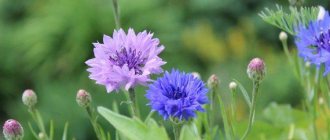A delightful shrub with interesting grayish foliage and showy yellow flowers, Santolin will become a real decoration of the garden. In order for the shrub to maintain a good dense shape and intense grayish color of the leaves throughout the season, it needs to be provided with appropriate growing conditions. How to grow santolina - planting and care in open ground are described in this article.
Brief description of Santolina
Depending on the variety, santolina flowers can be either rich yellow or light sand.
This Mediterranean evergreen branching perennial plant is a low shrub or subshrub with fragrant tubular flowers collected in small spherical baskets. Its leaves, similar to cypress branches, are silver-gray. Their scent is reminiscent of wormwood. The height of the bushes is half a meter. Santolina grows best in sunny, dry places without stagnant water, and prefers light, sandy or rocky soil with coarse sand or small stones for drainage.
Spring pinching gives the bush splendor and decorativeness, this allows the development of numerous side shoots.
In its homeland, in a mild climate, it is an evergreen perennial, but in the middle zone it is grown as an annual.
The openwork dissected young leaves are painted in a light green shade, and then a silvery fluff appears on them. Flowering under favorable conditions is observed from June to September. Many insect pests, especially moths, do not like the spicy smell of yellow buds. The inflorescences are located on a thin stem up to 25 cm long.
The special attractiveness of santolina is not in its button flowers, but in the unusual shape of the leaves. Their decorativeness depends on the growing conditions; when there is insufficient lighting, the shoots become very elongated and the bush falls apart, acquiring an unkempt appearance.
Application in landscape design
Santolina is a very elegant ornamental plant that can find many uses in the garden. It should be planted together with other sun-loving species that do not need much water. Santolina is loved in gardens for its very attractive silvery leaves, which serve as a good background for other plants. They contrast beautifully with the lush green lawn.
Usage options:
- It is very attractive on walls, in rocky, gravel gardens.
- With its help, you can fill free spaces in compositions in flower beds and ridges.
- Planted in flowerbeds in Provence and Mediterranean styles in combination with:
- lavender;
- sage;
- immortelle;
- Perovskiy;
- Buenos Aires verbena.
- Looks good in company with coniferous trees (with different varieties of juniper).
- The shrub can be well presented in compositions with other ornamental plants:
- sparkling and mealy sage;
- Gauston's ageratum;
- marigolds;
- begonia;
- pelargonium;
- garden geranium;
- heliotrope;
- girl's tansy.
- Can be used to create borders, path edgings, and low formed hedges.
- Looks good in a group, as a separate bush on a lawn or in a gravel garden.
- Excellent for growing in containers on balconies and terraces, the intense smell of the leaves repels harmful insects and mosquitoes.
- Other uses are known - moths do not like it, santolina branches can be placed in a closet, in drawers, between books. The twigs are great for herbariums and other dried flower arrangements.
Photo. Santolina in the garden - application options
Santolina is a fantastic plant. It smells pleasant of overseas spices, has intricate leaves and twigs, is ideal for dry places, repels insects, and blooms with cute miniature flowers that look very beautiful against a gray background. The beauty of santolina lies in its color, the shape of the branches and its aroma.
Santolina varieties: photo
Several varieties of this shrub are common in gardening.
Cypress
Externally, the bush resembles a cypress, hence the name
A shrub no more than 60 cm high with arched shoots, pinnate, strongly dissected leaves about 3 cm long with a bright aroma and felt-like pubescence. Long, single yellow flowers appear in June-August.
Cirrus
The only one of its kind that boasts white inflorescences
The plant is up to 60 cm high with narrow leaves up to 4 cm long. It has a wormwood aroma; in June, white flowers appear on long stems.
Neapolitan
This variety is prone to diseases when there is excess moisture and shady planting.
The tallest species, can rise a meter from the ground. Its leaves are green and its inflorescences are yellow.
Greenish
The plant looks fluffy and spreading, universal in landscape design
A rounded bush with green leaves, it blooms creamy all summer, it is considered the most winter-hardy crop, because it can withstand light frosts.
Graceful
For the winter, the perennial moves into the room
A heat-loving crop, in the middle zone it can only grow in an alpine greenhouse.
Rosemary leaf
Some leaves of this plant are only 1 mm in size
Low bushes with narrow green leaves, grown as a spice, used in pickling olives.
Santa
Santa Santa Bright sunny balls serve as a good decoration for front gardens
An elegant bush up to 40 cm high with white-silver succulent leaves, as if strung on twigs, and delicate yellow flowers.
General characteristics of Santolina chamaecyparissus
Santolina is a plant of the Asteraceae family. Native to Europe, it is widely distributed in the wild, mainly in dry and sandy soils of coastal areas and in all areas with mild climates up to 1000 meters above sea level.
Santolina is an aromatic perennial plant that grows in an erect or semi-erect manner. When fully vegetatively developed, the epigeal part or foliage gives rise to beautiful rounded bushes about 50 cm high, consisting of numerous thin and woolly stems covered with persistent, decorative and pleasantly scented foliage.
The leaves, deeply segmented, consist of small linear lobes, are grey-green in color and pubescent, like the branches.
Santolina flowers are collected in large decorative heads that appear at the apical ends of the stems and look like many round, bright yellow feathers.
Flowering
Very persistent flowers bloom continuously throughout the summer, which is also a favorable period for collecting, drying and storing.
Step-by-step instructions for propagation by seeds and cuttings
When propagating shrubs by seeds, the seedling method is used. Frost-resistant species are planted in the ground so that a powerful root system can form before wintering.
Planting shrubs in a checkerboard pattern is a good design solution
Sowing seeds in a permanent open place is carried out at the beginning of summer, when the soil is well warmed up. And they are sown for seedlings at the end of winter. Before sowing, the seeds are stratified in the refrigerator, keeping them in a damp cloth for a month. The process of sowing them is carried out in the following sequence:
- Ready seeds are placed in wide and shallow containers filled with equal parts of turf soil and sand. The seeds are deepened into the soil a couple of centimeters, and the containers with them are placed in a bright and warm place where the temperature is 18–20 degrees.
- In such conditions, sprouts appear in 2–3 weeks.
- When 2-3 true leaves form, the seedlings are planted in separate pots, and they are transplanted to a permanent place in late spring - early summer.
When rooting cuttings, observe the following rules:
- Only green shoots of the current year are suitable for propagation; lignified cuttings do not form a root system. The length of the cuttings is 8–15 cm. Cutting is practiced in late winter or early spring.
- Young branches are cut off from the part of the trunk on which they grow.
- They are treated with the stimulant Kornevin.
- Then they are planted in a mixture of sand and leaf soil in proportions of 2 to 1.
- Cover with a transparent container, lifted daily for ventilation.
- They are watered regularly, avoiding flooding.
- Rooted plants are planted in groups of three in individual pots. At the same time, for better branching, the crown is pinched.
- They are transplanted to a permanent place in June.
From the pot you have to plant the bushes into the garden bed
When planting seedlings in spring, dig up the soil to the depth of a spade bayonet. Sand is added to heavy soil. Landing is carried out as follows:
- The earth is dug up to a depth of a third of a meter.
- The Mediterranean guest is removed from the pot, straightening the roots, and placed in trenches, maintaining an interval between neighbors of 10–30 cm, and for tall species - half as often.
- They are covered with soil, then compacted in the root circle and watered abundantly for 3–4 days.
- Watering is reduced after seedlings take root.
Conditions for successful bush growth
In order for the ornamental shrub to grow well, choose a warm, well-lit place. The soil should have good drainage, and subsurface water should not come close to the surface. The seedlings should not have damaged leaves.
On damp, clayey soils it dies, on fertilized soils it grows well, and poor soils stimulate its flowering. It is better to choose dry soil with good water and breathability.
Recent Entries
Chainsaw or electric saw - what to choose for the garden? 4 mistakes when growing tomatoes in pots that almost all housewives make Secrets of growing seedlings from the Japanese, who are very sensitive to the soil
Flower care after planting
Plant care includes weeding, loosening the soil, fertilizing and watering.
Watering
You need to be sensitive to any changes in the appearance of the bush - they may indicate a lack or excess of moisture
During the growing season, regular but moderate watering is practiced. It requires a reasonable balance: the soil should not be allowed to dry out, but excess moisture leads to rotting of the roots. When the shoots turn yellow, stop watering for a while.
Top dressing
Fertilizing the plant begins in the spring and stops in August. It is enough to stimulate the spring growth of shoots and the above-ground part of the plant by feeding it with nitrogen fertilizer. To do this, half a kilogram of cow or chicken droppings is diluted in a bucket of water with the addition of 50 grams of mineral nitrogen fertilizers. The resulting substrate is thoroughly mixed, left for a day, then after mixing it is watered at the rate of half a liter for each bush.
A month later, re-feeding is carried out, but with potassium-phosphorus, to stimulate flowering. In this case, add 50 grams of potassium-phosphorus fertilizers and a handful of wood ash to a bucket of water with half a kilogram of manure. Pour a liter of the mixture under each bush.
Pruning in spring and autumn
If you radically prune the plant at the beginning of the season, there will be no flowering this year.
The following types of pruning are practiced:
- After flowering, the plant is cut back by 2/3 to form a bush that should not grow in width. But excessive pruning can lead to the plant not being able to bloom the next year.
- Before wintering frost-resistant varieties, lignified shoots are cut off.
- In the spring, sanitary pruning is done, in which diseased and dry leaves are removed. After a cold winter, it is recommended to prune in early spring.
- In summer, you can trim only overgrown shoots to preserve the spherical shape of the bush.
- Border species are trimmed, but at the same time some foliage is left on the shoots.
Trimming on video
Pest and disease control
The shrub is resistant to diseases and pests, but some problems arise when growing it, which is caused by improper care:
- When the soil is waterlogged, the roots rot.
- Lack of watering leads to overheating and drying out of the roots.
- Planting in the shade causes elongation of shoots and a complete lack of flowering.
- Deficiency of phosphorus and potassium leads to anthracnose.
In case of plant diseases, their watering is normalized and the bushes are sprayed with preparations that include copper - Fitoverm, copper sulfate, Oxychrome, Khom, Bordeaux mixture, Fundazol. Treatment of diseased plants is done according to the instructions supplied with the preparations.
Pests are one of the main reasons for the poor appearance of a plant and even its death.
Garden crops may be threatened by spider mites or aphids. When affected by these pests, it is sprayed with Iskra, Actellik or Aktara.
The ground beetle is very dangerous for the plant, the larvae of which, settling in the soil, gnaw the roots. When there is a mass emergence of beetles, the root collar and trunk are sprayed with Prestige for prevention.
Is a transplant necessary?
Replanting a garden plant is practiced every 5–6 years. Usually it is combined with dividing the bush. House shrubs are replanted annually.
Wintering in the open ground
You can leave the bush outside indoor conditions if the climate in your region is not too cold
The Mediterranean guest tolerates light frosts quite easily, but freezes out in severe winters. In regions with mild winters, it is enough to cover it with spruce branches, straw and leaves. You can sprinkle frost-resistant perennial varieties with sand and wood ash. It is better to cover the top with wooden boxes. It is also practiced to install a wire frame with several layers of covering material over the spruce branches. With the onset of spring, shelters are partially removed to ensure access to air and light, and they are completely removed at the end of March.
In case of severe frosts, the crop is dug up in mid-autumn and placed in dry sand in a dry place. In winter, store it in a dark and cool place. It is important that shrubs are destroyed in winter not so much by frost as by alternating periods of severe cold and thaw. In this case, the wet roots of plants die.
Owner reviews about growing
I think many are familiar with this beautiful flower. The most unpretentious plant that you can plant in your garden and forget about it. In the sense that its care is minimal, and the method of reproduction is incredibly simple. Mostly in the autumn season, you tear off a branch from a santolina bush and plant it in the ground. That's all, the survival rate is excellent, there is no need to cover the bush with anything for the winter - the bush heroically endures any bad weather. And what a smell it gives off - invigoratingly sweet and delicate. I recommend planting this flower in your summer cottage - you won’t regret it.
Olga1987
https://forum.rmnt.ru/threads/santolina.107267/
Santolina cypress is experiencing its fourth winter. It survived last winter perfectly without any shelter, although it did not bloom. And this summer I lost the felt one through my own fault - I looked for a new place for it and decided to replant it in the spring, but it was unsuccessful. precipitation - for example, a piece of plywood to ventilate from below.
Bagheera
https://websad.rf/archdis.php?code=287700
Of the 30 seeds I had, 22 survived until planting in the OG. Then about 15 remained. My dog broke. Over the summer they grew by about 20 cm. They fluffed up. But, to be honest, it reminded me more of wormwood. The color was green at first, then became bluish. But in the fall, I peeled it a lot and cut a whole bunch of cuttings, which I simply stuck into a common bowl and brought into an unheated room, about 70% took root. They still stand that way.
Galina Kuprik
https://forum.bestflowers.ru/t/santolina.33781/
Varieties and species of Santolina
Among the numerous species of Santolina and among the most cultivated we remember:
Santolina chamaecyparissus
A small species, about 35 cm high, ideal for decorating rocky gardens and suitable for growing in pots.
Santolina rosmarinifolia
An evergreen variety with dark green foliage and a pleasant resinous aroma. In summer, the leaves of this species become whitish in color. This is a cold-hardy plant and should be grown in full sun in a light, well-drained substrate. During the flowering period, from May to August, the plant produces cream-colored flowers. It takes about 4 years to reach full vegetative growth and is suitable for a rock garden. In favorable soil and climatic conditions, specimens form rounded bushes more than 1 meter wide.
Application of santolina
The plant is used in gardening, for decorative purposes, to cover rocky gardens or to create low fragrant hedges, and is grown in pots on balconies and terraces as a plant that repels mosquitoes and other annoying flying insects.
The dried leaves and flowers are used to make scented laundry bags and to repel moths from closets.
In the kitchen, it is used in various recipes, for example, the leaves are used to flavor fish dishes.
Medicinal properties of santolina
It also has antispasmodic, stimulant and vermifuge phytotherapeutic properties. The leaves can be used to prepare infusions, digestive or anti-inflammatory decoctions, as well as compresses for external use to soothe itching and burning caused by insect bites.
Curiosity
Santolina , also called crespolina for the special shape of its leaves, and lavender cotton for its pleasant aroma.
The generic name Santolina comes from two Latin words, sanctum (holy) and linum (flax), and the specific epithet chamaecyparissus means ground cypress.











